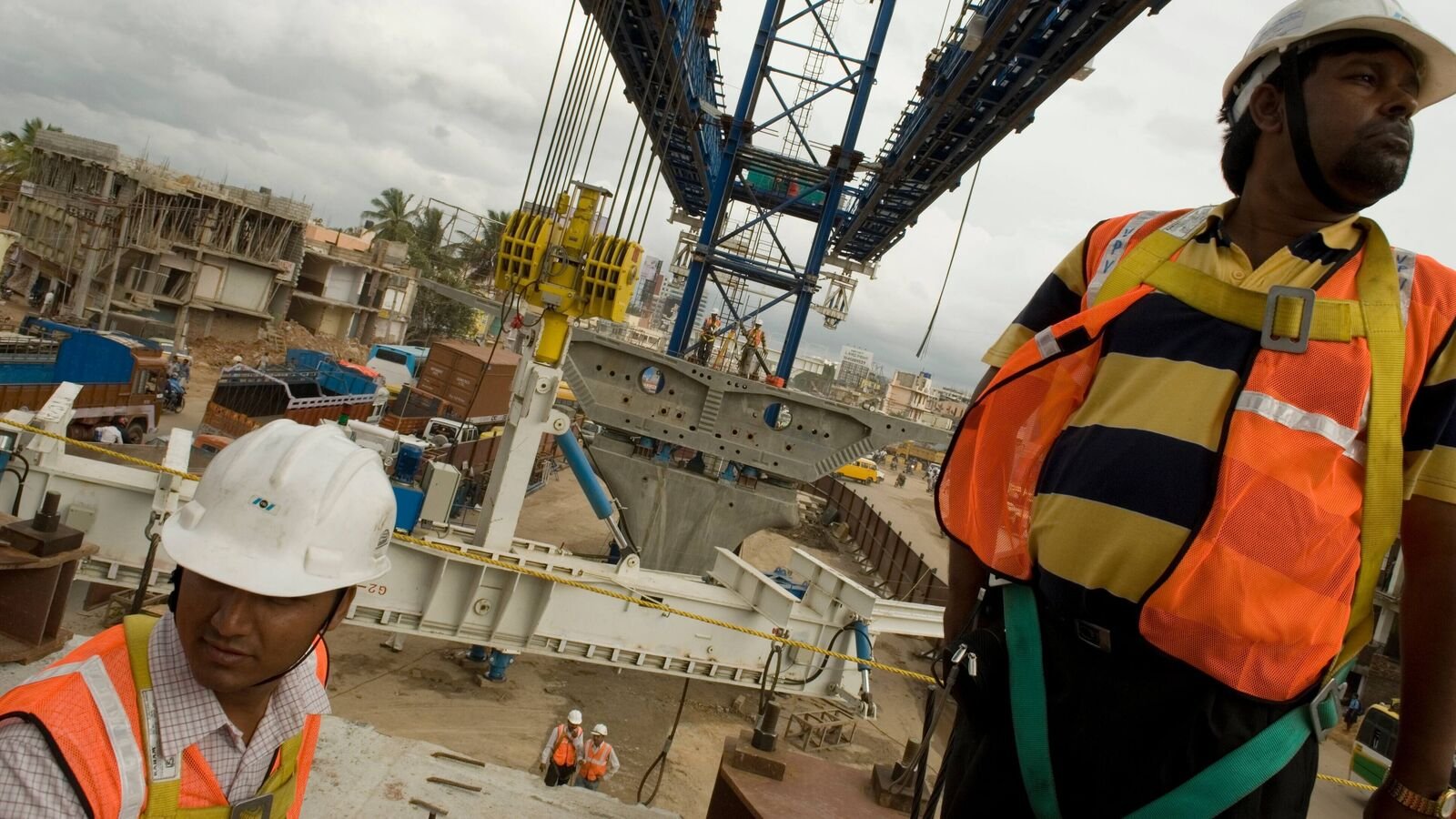NEW DELHI :The growth in private investments in fixed assets cooled in 2022-23 after a rebound in the year before when it recovered from a pandemic-induced contraction, official data showed. Unless exports revive and wage growth fuels domestic consumption, private investments may not improve in the coming year either.
The growth in private investments in fixed assets cooled in 2022-23 after a rebound in the year before when it recovered from a pandemic-induced contraction, official data showed. Unless exports revive and wage growth fuels domestic consumption, private investments may not improve in the coming year either.
Private investments in fixed assets rose 6.4% in real terms in 2022-23 to ₹19.7 trillion at 2011-12 prices, after a 16.4% growth in 2021-22. The rebound in 2021-22 had come after a contraction of 8.4% in 2020-21, when the economy locked down after the covid outbreak.
Premium benefits
35+ Premium articles every day
Specially curated Newsletters every day
Access to 15+ Print edition articles every day
Subscriber only webinar by specialist journalists
E Paper, Archives, select The Wall Street Journal & The Economist articles
Access to Subscriber only specials : Infographics I Podcasts
Unlock 35+ well researched
premium articles every day
Access to global insights with
100+ exclusive articles from
international publications
Get complimentary access to
3+ investment based apps
TRENDLYNE
Get One Month GuruQ plan at Rs 1
FINOLOGY
Free finology subscription for 1 month.
SMALLCASE
20% off on all smallcases
5+ subscriber only newsletters
specially curated by the experts
Free access to e-paper and
WhatsApp updates
Private investments in fixed assets rose 6.4% in real terms in 2022-23 to ₹19.7 trillion at 2011-12 prices, after a 16.4% growth in 2021-22. The rebound in 2021-22 had come after a contraction of 8.4% in 2020-21, when the economy locked down after the covid outbreak.
Data on investments—both private and public—forms an important component of the country’s gross domestic product (GDP) data, collectively called gross fixed capital formation (GFCF). While GFCF data is released every quarter, granular details on investments by specific types of institutions are only released annually, and 2022-23 is the latest year for which the data was released last week by the statistics ministry. The data may be updated next year.
Experts said an improvement in the external situation and a resultant boost in exports can lift private investments. Also, an improvement in real wages could boost consumption demand and as a result, capacity utilization in factories and private investments in the future.
“Private investment has not been restored fully to its earlier levels and that is the effect of net exports contributing negatively. The outlook for investments would improve on two conditions. One is that global conditions improve and our exports improve. Second is that the government’s continued support for infrastructure etc., would start having a crowding-in effect,” said D.K. Srivastava, chief policy adviser, EY.
The tightening of interest rates in the West has hurt India’s exports and investments. Higher exports can lift investments; however, trade distortions and geopolitical crises may take a toll in exports in the next fiscal year as well.
Private investments are taking place in select sectors such as renewable energy, pharma etc., but an across-the-board investment revival will take time, said Devendra Kumar Pant, chief economist, India Ratings and Research (Fitch Group). “It is very difficult to put a timeframe for a structural revival of consumption demand. When the government scales up capital expenditure, its effect of crowding in private investment comes with a lag because investors will look for stability of demand. Consumption by people at the bottom of the pyramid becoming more robust can further boost corporate capacity utilisation. However, growth in real income of people at the bottom of the pyramid is either slow or is in the negative. Our analysis shows that a 1 percentage point rise in real growth of wages, which can come either from nominal wage increase or reduction in inflation, can lead to a 112 basis point increase in consumption demand,” Pant said.
Over the years, private and government investments have diverged, as companies held back in the face of muted demand while the government picked up the slack during the pandemic years.
Addressing an industry meeting last week, Union finance minister Nirmala Sitharaman asked businesses to “join in a big way” to push up India’s growth trajectory. She also called for more joint ventures around the world, even as more foreign investments come into the country.
The Reserve Bank of India’s (RBI’s) February bulletin urged private companies to lead the way in expanding capital expenditure. The corporate sector must “get its act together” and relieve the government of capex heavy-lifting, the bulletin said. “Expectations for a fresh round of capex by the corporate sector to take the baton from the government and fuel the next leg of growth are mounting,” an article titled State of the Economy said.
Private investments, which began moderately in 2023-24, have picked up, as markets have factored in the potential downsides from the ongoing geo-political risks, which are expected to continue, said N.R. Bhanumurthy, vice-chancellor, Dr. B.R. Ambedkar School of Economics University, Bengaluru.
“Meanwhile, challenges presented by inflation have seen some improvement globally, with central banks in the advanced countries now expected to reduce interest rest in the coming quarters, which will likely lead to more private investments into India,” Bhanumurthy said.
“The RBI bulletin also states that there has been an uptick in private investments since October-November 2023. The response from the stock market has also been good,” he added.
The share of private investments in overall investments in fixed assets (at 2011-12 prices) touched 41.2% in 2015-16 and was close to 39% in the subsequent year, but thereafter, remained within a range of 36-37.8% up to 2022-23. As a share of GDP, it remained in the range of 11-12.6% in the 12 years up to 2022-23.
On the other hand, reflecting the capex push being given in the Union budgets in recent years, investments in fixed assets by the ‘general government’ (central and state governments together) showed growth during the pandemic period. The figures for government investment that expanded 2% in 2017-18 and by 2.85% in 2018-19 had jumped 5.3% in 2019-20 and then by 6.4% in 2020-21. In 2021-22, when the country witnessed the second wave of the pandemic, the government’s investments in fixed assets showed a small improvement over the higher base of the previous year, rising 1.4%. However, in 2022-23, it showed a sharp escalation by 15.2%, data showed.
Quarterly GDP data released by the ministry does not include details of different segments within GFCF.
Investments in fixed assets by households and unincorporated businesses, which had contracted by 8.8% in 2020-21, rebounded 25% in 2021-22 but subsequently showed moderate growth of 4.2% in 2022-23.
GFCF, which contracted 7% in 2020-21, rebounded 17.52% in 2021-22 but the revival moderated to a 6.6% growth in 2022-23. It is, however, expected to stage a strong 10.2% growth in the current fiscal year, as per second advance estimates.
Data released by the statistics ministry last week showed India’s GDP growth surged to a six-quarter high of 8.4% in the December quarter on the back of strong investment growth in plant and machinery, robust manufacturing growth and a slight improvement in trade. However, consumption and government spending grew slower than previously estimated during the period.
This prompted the government to estimate a 7.6% growth in 2023-24, up from 7.3% estimated earlier by the statistics ministry.
The latest forecast comes after RBI revised its growth forecast to 7% for the current fiscal year, from an earlier estimate of 6.5%, on the back of robust growth in the first two quarters of the ongoing fiscal.
However, despite being the fastest-growing major global economy during 2023-24, India faces risks to growth and stability from inflation in advanced countries and supply chain disruptions re-emerging.
Besides, escalating geo-political conflicts are threatening shortages in commodities, driving up oil prices and intensifying inflationary pressures.




